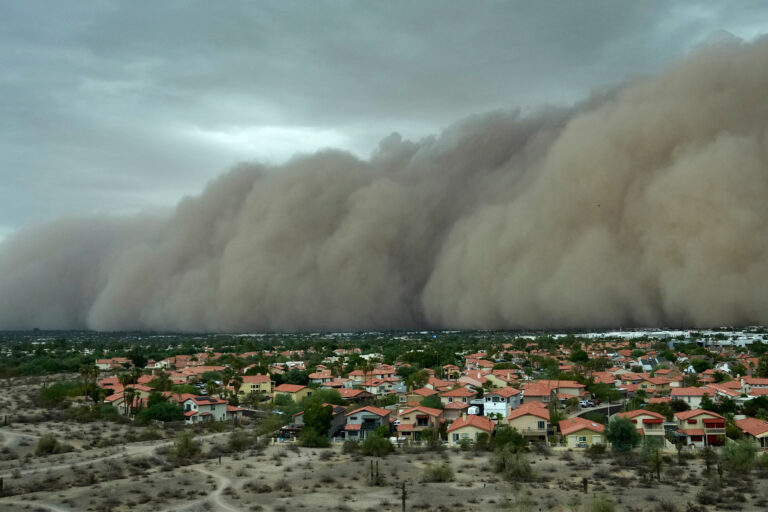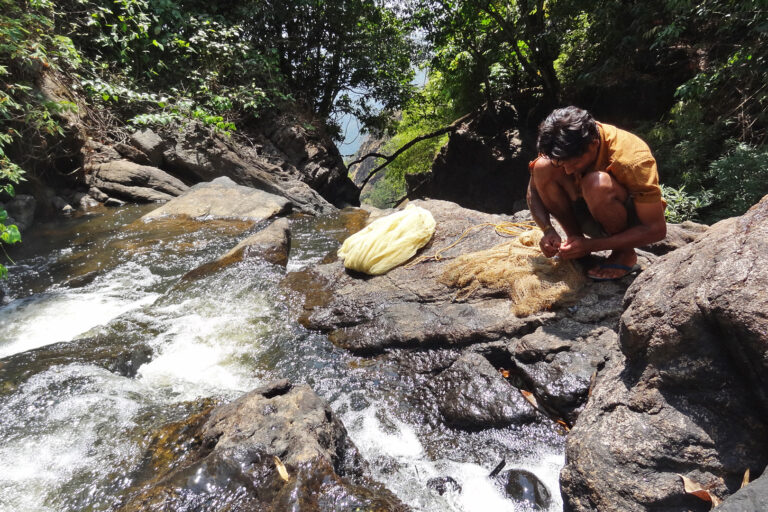- State-owned Peruvian oil company Petroperú, has plunged into massive debt to complete the rehabilitation of its Talara refinery, estimated to have cost $6.5 billion.
- Crisis hit in 2022, when the company lost its investment-grade rating from credit agencies; in 2023, its financial report revealed losses of more than $822 million that year.
- Petroperú has received three capital injections from the government, the last one amounting to $1.3 billion, raising concerns among NGOs and Indigenous communities about what might happen to all its sites pending remediation if it were to collapse.
- Since 2020, the company has been hit with 154 fines from Peru’s energy regulator and 61 administrative measures by the environmental regulator, a new report shows.
On Sept. 11, 2022, Olivia Bisa Tirko received a call from a forest guard who informed her of an oil spill in the territory of the Chapra Nation in the Peruvian Amazon. The North Peruvian Pipeline operated by state-owned oil company Petroperú had ruptured, spilling 2,500 barrels of oil into the Marañón River, a major tributary of the Amazon River.
“For us as a nation, it was a catastrophe,” Bisa Tirko, the president of the Indigenous nation’s autonomous government, told Mongabay in a video call. “It filled me with helplessness to see that happen to the place where you were born, grew up, walked all your life, swam, fished. It was a disaster.”
To date, Petroperú hasn’t contained the environmental pollution, Bisa Tirko said. And now the company is mired in a financial crisis. In 2022, it lost its investment-grade rating from credit agencies after taking on a large amount of debt to complete its Talara refinery upgrade, estimated to have cost $6.5 billion. In 2023, Petroperú reported losses of more than $822 million. Since then, the company has received three capital injections from the government, the last one in February, totaling $1.3 billion.

A new report by the Hydrocarbon Impact Working Group (GITH) of the National Human Rights Coordination, a group of 17 civil society organizations, shows that the 2022 spill in the Chapra territory wasn’t an isolated case: Petroperú has since 2020 been responsible for 191 recorded oil spills — behind only Pluspetrol, Peru’s largest oil and gas company, responsible for 394 spills during that period.
Also since 2020, Petroperú has been hit with 154 fines from the country’s energy regulator, OSINERGMIN, and 61 administrative measures by the environmental regulator, OEFA, according to the GITH report. The report raises the question of what will happen to all of its sites pending remediation if Petroperú were to collapse as a result of its financial crisis.
“What worries me is the lack of a regulatory framework that can guide how a possible transition would work in the case of Petroperú no longer being in charge of the North Peruvian Pipeline or other lots,” Aymara León Cépeda, a co-author of the report and adviser for the Northern Amazon Oil Observatory (PUINAMUDT), told Mongabay in a video call. “Unfortunately, we already know from experience that when there are no guiding frameworks that establish who is responsible, things are left up in the air and that is very concerning regarding the Petroperú issue.”
Some experts, such as Vladimir Pinto, the Peru Coordinator for Amazon Watch, told Mongabay that it’s likely the government will try to prevent Petroperú’s failure. “It is difficult to say, but the tendency is that the state is going to prevent it from collapsing, which is understandable because the company effectively has obligations to fulfill and it has a set of assets that are valuable to the state and it won’t want them to be lost.”
Environmental disaster
Bisa Tirko spoke of the pungent smell of oil and the shock she said she felt as she surveyed the fallout from the 2022 oil spill. For weeks, the Chapra people waited for Petroperú to arrive and contain it. They never arrived.
That compelled Bisa Tirko to return to Lima, the Peruvian capital, to denounce the company’s inaction and demand measures to clean up the mess. When she was there, she learned Petroperú had filed a criminal complaint against her for crimes she hadn’t committed. “I was calm but my family began to worry,” she said. “I have never had any criminal charges, much less for this type of situation.”

According to Bisa Tirko, Petroperú representatives didn’t meet with the community until Oct. 13, 2022, more than a month after the spill, and only promised to return a few days later to begin the containment and cleaning procedure. However, the company didn’t come back until April 2023, she said.
A Petroperú spokesperson told Mongabay in an email that when the spill occurred, the company “immediately activated its Contingency Plan, mobilizing equipment and personnel of the company and contractors to point zero.” These contingencies are now in the “Assurance and Control” stage, they said, “with barriers and dedicated personnel in the area to prevent hydrocarbons that may have remained after the first response actions from migrating to other areas.”

Bisa Tirko said the contamination is still present and all the waste that was collected into bags was left at the scene, piled up and unprotected from the rain. “I have images from a few days ago when I was there,” she told Mongabay. “It’s still the same. You just put a wooden stick under the ground and it comes out pure black, pure oil.”
When asked about this, a spokesperson for OSINERGMIN, the energy regulator, said their office “does not verify compliance with the environmental obligations of the agents that carry out Hydrocarbon Activities” and that “the supervision of environmental obligations by agents that carry out Hydrocarbon Activities is not within its functions.”
For the community, it’s been difficult to make a living from artisanal fishing as they did before; buyers know about the oil spill and that the water is still contaminated, Bisa Tirko said. The community has filed complaints and taken legal action against the company, but to no avail.
Although the criminal complaints against Bisa Tirko were eventually dismissed, she continues to receive threats from people she says are associated with Petroperú. On two separate occasions, armed men searched for her at her father’s home but left when they realized she wasn’t there.
“Petroperú has criminalized Indigenous leaders on multiple occasions,” León Cépeda told Mongabay. “Only after many years have they managed, thanks to the defense of the Indigenous organizations themselves, to acquit leaders who were imprisoned for protesting against a spill.”
In response to the story, Petroperú wrote to Mongabay to clarify “that the only complaint that the company has made against Bisa Tirko and another leader was linked to the oil spill at kilometer 177 of the North Branch of the North Peruvian Oil Pipeline (ONP), which occurred on September 10, 2022. The complaint in question was made for attacking common security, since the residents prevented the cleaning and repairing of the pipeline. However, once the true perpetrators from a neighboring community were identified, the lawsuit was withdrawn. We want to emphasize that Petroperú does not have any judicial proceedings against Bisa Tirko and has never made threats towards her or any other person in the community.” The company’s response added that “Petroperú is a company that respects people and fundamental rights, therefore it is unaware of any intimidating tactics such as those mentioned by Bisa Tirko.”
Financial troubles
In April, Petroperú said it needed $2.2 billion in financial help and forecast millions of dollars in losses. The Petroperú spokesperson told Mongabay the company’s board had initiated a series of structural changes to respond to the “serious economic and liquidity crisis that the company has been facing,” such as the contracting of a private management firm to oversee its restructuring process, the optimization of the company’s existing infrastructure, and other measures.

In a press statement issued in May, the company said it was operating with limited revenue growth and low profitability and its market share had dropped from 51% to 25%. The financial conditions were caused by delays that almost tripled the cost of building the new Talara refinery, by an inefficient and oversized operational organizational structure, and by other issues such as weaknesses in its risk management model, the statement said.
According to the GITH report, Petroperú hasn’t finished cleaning up multiple spills, causing not only negative environmental and health impacts, but also a complicated legal situation since it’s unclear who would be responsible for the outstanding remediation work if the company went under. Due to a state regulatory vacuum, in the past, companies have been able to evade the obligation and economic investment that remediation implies, the report noted.
After a company’s contract ends, it’s legally obligated to produce what’s known as an abandonment plan, which outlines remediation and restoration actions, such as what to do with contaminated sites, dumps and obsolete infrastructure. However, despite calls from affected Indigenous peoples, including leaders of the Kichwa, Achuar and Quechua nations, very few companies in Peru have produced abandonment plans or taken action to repair the damage caused by their activities, the GITH report said.
León Cépeda told Mongabay that companies can get away with this because there’s no strong punishment inducing them to comply, such as going after parent companies that have more resources than smaller branches in the country, or the revocation of the entity’s rights.

“When we find ourselves in a scenario where the measure is not being complied with within the established deadlines and forms, the OEFA has other mechanisms such as coercive fines,” a spokesperson for the environmental regulator told Mongabay. The idea is to “force the holders to comply with the mandates that have been imposed until compliance is achieved.”
But León Cépeda told Mongabay the fines aren’t a sufficiently strong mechanism to push companies to comply with their environmental obligations, as companies often prefer to pay or ignore them because it’s cheaper than executing an abandonment plan.
This has been the case for Lot 192, formerly known as Lot 1AB, which is one of the oldest oil production sites in Peru and the location of the greatest number of oil spills in the country. After roughly 54 years of oil operations on this site, currently owned by Petroperú after swapping hands between four separate oil companies that failed to address their contamination before departing, the cost of environmental damage is $5.5 million.
León Cépeda told Mongabay that the removal of obsolete infrastructure is a highly technical and costly operation and it’s unclear who would take charge of this if Petroperú were to collapse. “There is no guarantee that all of these pending measures will be taken on by any entity,” she said.
Banner image: Image by Alessandro Falco/PUINAMUDT. Courtesy of Cuencas Sagradas.
FEEDBACK: Use this form to send a message to the author of this post. If you want to post a public comment, you can do that at the bottom of the page.














